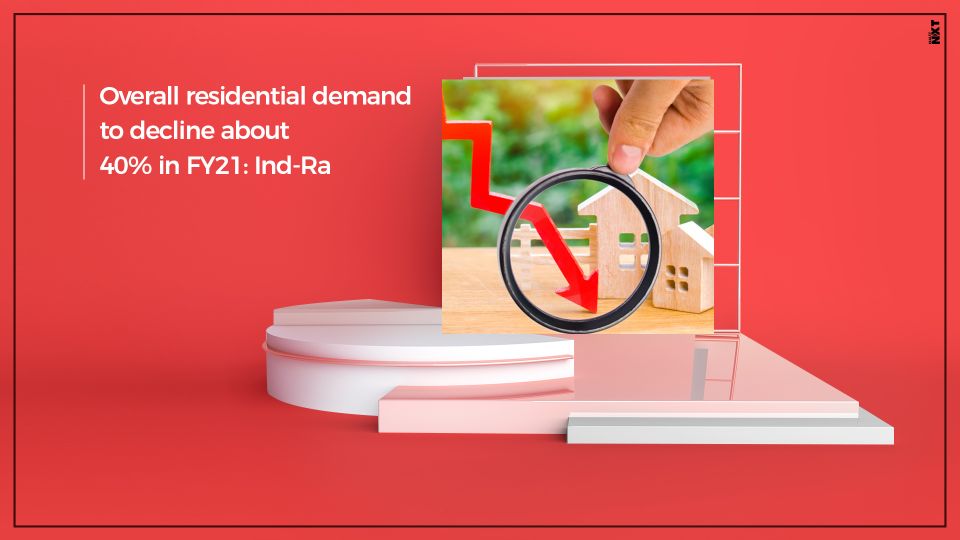India Ratings and Research (Ind-Ra) has published the 1HFY21 edition of its credit news digest on India’s residential real estate sector.
Ind-Ra had maintained the sector on a negative outlook for 2HFY21 in a September publication, based on a revision its recovery estimates for the sector on account of the possibility of a continued slower-than expected-recovery.
Based on Liases Foras data for 1HFY21 so far, the actual decline in sales is higher than Ind-Ra’s estimates.
Ind-Ra believes the overall residential demand would decline about 40% yoy in FY21, with the affordable segment being the worst hit, due to the higher-than-anticipated slowdown caused by the COVID-19 pandemic. Demand-side risks combined with a rising uncertainty over credit availability for the sector in the light of increasing risk aversion by financial institutions could add to the refinancing as well as liquidity risks for the sector.



As per Liases Foras real estate market data for 2QFY21, while the COVID-19 related lockdown resulted in a rise of the unsold inventory levels to over 15 quarters at end-FY20, this increased to over 19 quarters at end-1HFY21, exacerbated by muted sales in 1Q and a slow recovery in 2Q. Of the six key markets, Hyderabad and Bengaluru had the least quarter to sell inventory while Chennai had the maximum unsold inventory, followed by Mumbai Metropolitan Region in 1HFY21.
Residential sales were down 50% yoy to 68 million sf in 1HFY21 across the top six cities in India. National Capital Region and Bengaluru saw the maximum decline yoy in 1HFY21 (over 55%) due to the COVID-19 related lockdown. Furthermore, the share of total sales for the affordable housing segment (homes valued up to INR5 million) witnessed a slight decline (33%) yoy compared to 1HFY20 (35%).
The residential sector continues to under-perform as an asset class, impacting investor demand. Hyderabad remains the only market which has shown a price CAGR in a high single digit, while the other markets have lagged behind with sub-par price CAGR of 1%-2% over the past five years. All cities, with the exception of Hyderabad and Bengaluru, have witnessed a slight decline of prices since FYE20.
Disbursements from housing finance companies and wholesale non-banking financial companies (NBFCs) to the real estate sector had declined slightly in 1QFY21 (compared to FY20E), but recovered in 2QFY21. However, NBFCs’ assets under management towards real estate have been steadily on decline since 4QFY19, on the back of the asset sell-down exercises being conducted by most NBFCs.
A recent publication by the Reserve Bank of India on Current Situation Index and Future Expectations Index in September 2020 suggests changes in consumer sentiments and expectations of the Indian people. Historically, Ind-Ra has evidenced a spill-over effect on real estate when these indices had dropped. Ind-Ra expects a longer-than-expected time to recovery for the real estate sector, based on the steep drop indices over 1HFY21. The Current Situation Index recorded its third successive all-time low, while the Future Expectations Index improved for the second successive survey round.
Source: India Ratings
(This story has been published from a wire feed without modifications to the text. Only the heading has been changed)
ALSO READ: Sebi Imposes Fine Of Rs 10 Lakh On Individual For Insider Trading In DHFL Shares




























